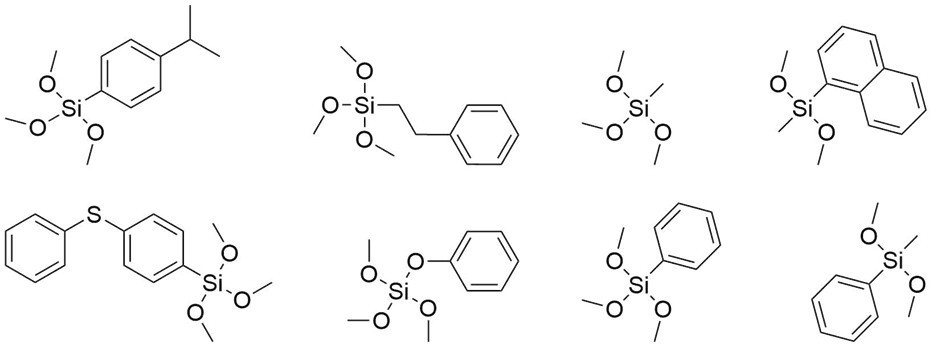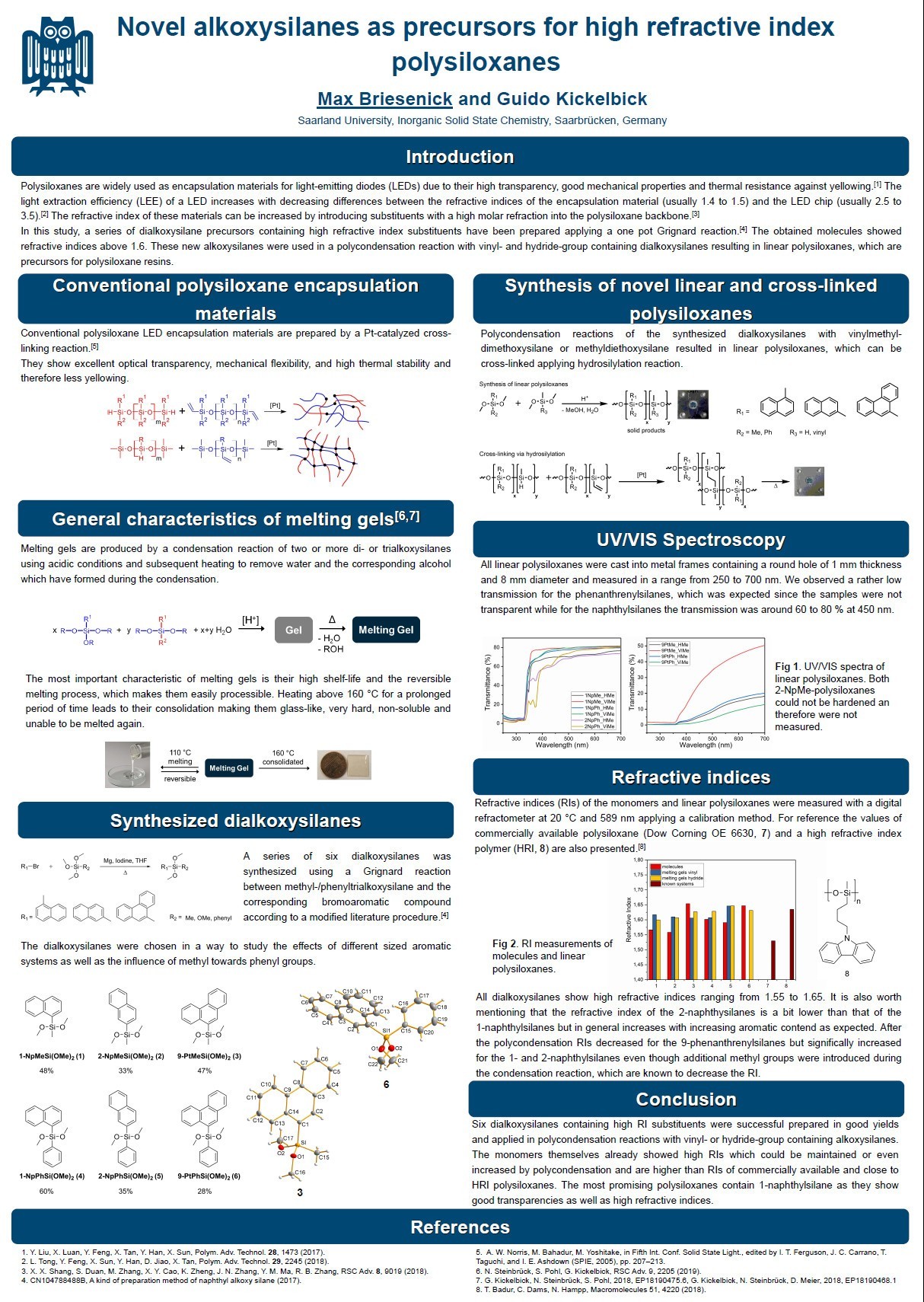Briesenick, Max
M.Sc. Max Briesenick
PhD student
phone: +49-(0)681-302 70674
E-Mail
ORCID-ID:
► Research
Polysiloxanes and silsesquioxanes with a high refractive index for Optoelectronic Applications Polysiloxanes and polysilsesquioxanes are ideal materials for optoelectronic applications due to their high transparency, good processability and high chemical and temperature stability. It is possible to affect the refractive index of polysiloxanes by changing the substitution pattern of the silicon atoms along the polymer chain. Commercially available systems with a high refractive index often contain methyl and phenyl groups in their polymer chain. Combining two different groups in a polymer not only influences its refractive index but also enhances characteristics like adhesion, thermal stability and hardening process. The research project investigates the synthesis of novel alkoxysilane monomers with a high refractive index by varying the substituents at the silicon atom. These monomers will then be reacted to polysiloxanes by using a polycondensation reaction to yield high refractive index materials. The aromatic or polyaromatic substituents often also lead to an increase in viscosity and thus to poorer processability and a more brittle material. The introduction of short-chain alkyl components, such as methyl groups, and the attachment of molecular spacers between the silicon atom and the aromatic residue can reduce the viscosity. The modification of the aromatic backbone by introducing electron-rich heteroatoms such as oxygen and sulfur, the use of metal ions and the degree of cross-linking can also influence the refractive index and viscosity. The investigation of corresponding structure-property relationships is a major goal of the research project.


